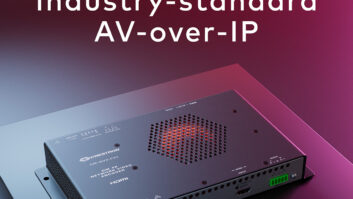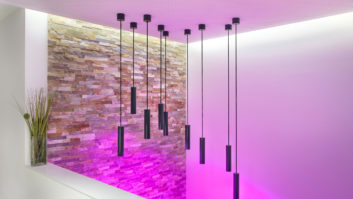As a home technology integrator, one of the most important services that we provide our clients is a whole-house control system that best matches the control needs of each family member.
As Shelly Palmer expressed at the conclusion of his keynote talk at CEDIA in Dallas, it is critically important that we master the “man-machine partnership” for our clients as the key to maximizing the usefulness of technology in the home. It stands to reason that the easier and the more reliable our clients control of their home’s technology, the more they will want to purchase technology solutions to improve the entertainment, comfort, and security in their homes.

To best understand the myriad of integrated control usage scenarios, cyberManor has installed all of them in its Smart Home Experience Center.
The example I like to use is that when we can easily deliver the exact music that our clients want to hear in any room at any time, then we have a greater opportunity to install and integrate a more extensive whole-house music system. If we make it easy for clients to enjoy lighting scenes that reflect their daily activities, it gives us a greater opportunity to install and sell a whole-house lighting control system. We aspire toward giving our clients a frictionless home technology experience, whereby any response that our clients want from their home technology systems happens intuitively.
But making the control of home technology “easy to use” is a greater challenge, as our clients’ homes get more and more technologically sophisticated. Fortunately, almost all of the home’s technology systems can be connected to the home’s network, affording the integrator a wide variety of control options for the homeowners. These options give the integrator a rich toolkit of hardware and software control options.
Today when we review the home technology control options for a given room and user, we have a host of user interfaces from which to choose: button-based remotes, wall touch-panels and switches, tablets, and now, voice user interfaces.
And tomorrow we may have no user interface at all, when an aesthetic wearable device can interpret our brain signals and perform the control action we want accomplished in the home (Alex Capecelatro of Josh.AI gave the talk at CEDIA on the potential of no UI).
It’s clear that providing the optimal user interface for the homeowner is a moving target.
In scenarios where the homeowner is active in the kitchen or office and wants an action such as turning on/off lights or heating systems, voice is becoming the preferred method. The popularity of the Amazon Echo and Dot solution for our homeowners is that they can use their voice for control without the need to push any button at all. Amazon’s success has prompted Google to respond with Google Home, a product with a hardware feature set similar to the Echo and Dot products.
The competition between Amazon and Google will spur rapid improvements in natural and intuitive speech syntax for home control over the next several years. Undoubtedly, voice will become the dominant user interface in the home. (For a link to my “Evolution of Voice Control” column, visit www.residentialsystems.com/1116).
There are times, however, when it is inappropriate to use voice control in a room, such as a bedroom when someone is trying to sleep; then, a gesture or button push may be the most appropriate control action. The graphical user interface still makes the greatest sense when viewing TV electronic program guide options, selecting music options, or viewing the home’s security cameras. Wall and tabletop keypads are often still the best alternative for instant-access lighting, shade, or music control.
Fortunately, most of these control options are interchangeable and can be added at any time to the connected homes of our clients. Selecting best-of-breed network-connected subsystems ensures that any of these control layers can be added at any time to the home’s technology infrastructure. And the best part is that these intelligent control systems improve over time, as the manufacturers improve their control software. When Sonos announced its software partnership with Lutron at CEDIA, they immediately enabled all the Lutron in-wall keypads to become volume controls for their whole-house audio system.
To best understand all of these integrated control usage scenarios, we have integrated our cyberManor Smart Home Experience Center with all of these control options. Just as one would have a suit custom tailored for a perfect fit, we use our experience center to guide our clients through these control options so we can create a custom solution that is perfect for their control needs. As a custom electronics integrator, we strongly believe that our broad knowledge of custom control options for our clients represents one of our strongest competitive advantages–and one of the most valuable services that we provide.
Gordon van Zuiden ([email protected]) is president of cyberManor in Los Gatos, California.







